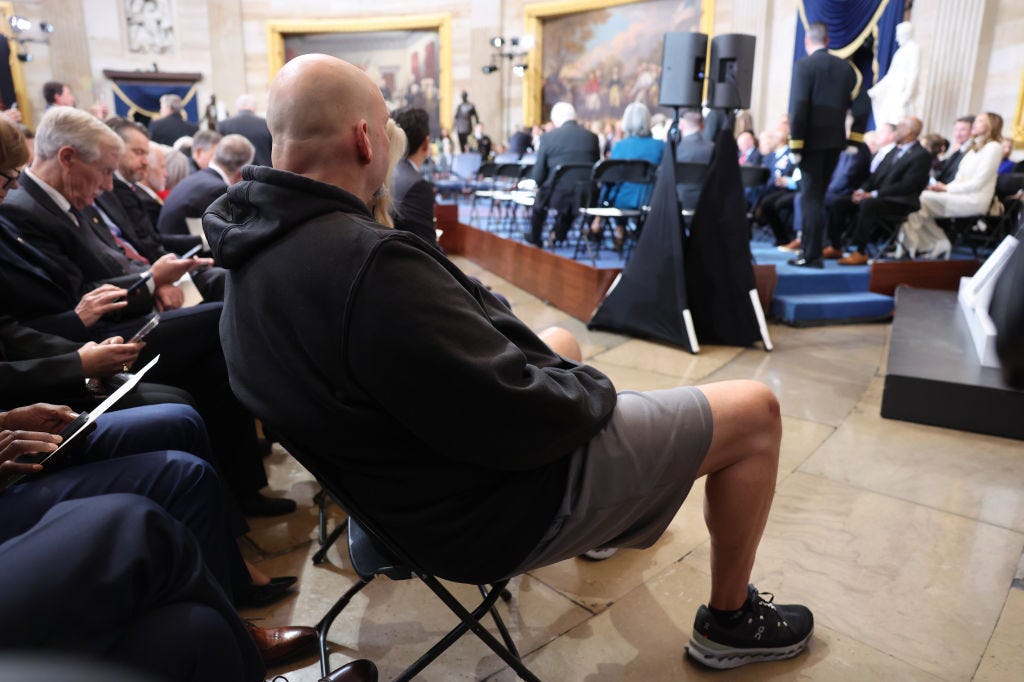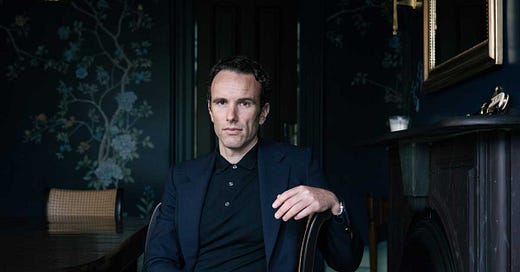
The Free Press

When I was 29 years old, I left the Marines and joined the CIA. It was a major transition—I moved from coastal North Carolina to Washington, D.C., and I went from being Captain Ackerman to Mr. Ackerman. But the most intimidating change was something else: I would need a new wardrobe.
I had worn a uniform to work my entire adult life, one designed solely for utility and stitched head to toe with pockets. Suddenly, the dress code demanded a suit and tie. It wasn’t like that for all of the CIA. This was only the dress code for our small office, a unit filled with former special operators. Our boss insisted, whenever we had a meeting with anyone outside of our office or at headquarters in Langley, Virginia, that we dress “like gentlemen.”
Special operations might sound distinguished, but the stereotype was that we were knuckle-draggers; not as smart, refined, or sophisticated as our colleagues who worked the diplomatic circuit. In short, boneheads. So if one of us tried to attend a meeting at headquarters wearing a field jacket or cargo pants, our boss would lose his mind.
“Only an idiot shows up to a basketball game wearing his football pads,” he would say. “You have to play by the rules of the game you’re in.”
Those rules meant I needed a suit, and I didn’t own one. My father was a businessman—a banker. He knew the importance of presentation and had a beautiful wardrobe. Seven-fold ties by Hermès and Charvet. Suits cut in Milan, on London’s Savile Row, or in Hong Kong. To celebrate my new job, we went to his closet, and he told me to pick four suits to take to his tailor to alter so that they fit me. When I wasn’t overseas, I wore those suits to work, and I still wear them to this day. From my father to my first boss I didn’t call “sir,” a small handful of men have taught me not only how to dress but also that there is nothing emasculating about being deliberate with your appearance, and that, in fact, to appear otherwise is unmasculine and childish.
Men are on the rise. Kamala Harris’s Brat Summer led to Trump’s Bro Fall. But so many of these “manosphere” dudes look like clowns. Leaping tech titans in too tight—or too baggy (looking at you, Zuck)—T-shirts. Political appointees with American-flag pocket squares. Do you blow your nose into Old Glory? And do I really need to mention Senator John Fetterman—who isn’t a tech bro, but still—who thought the inauguration a fitting venue for a hoodie and shorts? C’mon, bros. Do better.

It’s easy to say: Who cares? What does dressing matter? But culture, politics, and dress have always been intertwined. Dress is a potent form of visual communication. Especially militant French revolutionaries were called sansculottes, or without stockings, to distinguish themselves from the silk-stocking-clad aristocrats. High heels were originally created for men, imported from the East, and worn by conquest-loving horse-mounted warriors to keep them secure in their stirrups.
These days it feels radical to wear a tie, let alone a suit. But I suggest we ditch the T-shirts, hoodies, and sweats. If men are back on the scene, we’d be well-served to up our game; to dress like men, not boys.
In the spirit of showing up to play the game you’re in, and hoping the rest of the team does the same, here are some of the things I think about when I get dressed.
The Difference Between Fashion and Style
Fashion is temporary. Style is permanent. My father-in-law and mother-in-law had a big age difference—24 years—and he was a World War II veteran whom I never met. But we have photos of him from the 1940s, ’50s, and ’60s all around our home. And guess what? He looks great in every single one of them. If he were to step out of the photo and sit down to dinner, he’d be the most stylish guy in the room. It’s not because he was wearing the latest zoot suit from the ’40s or a flower power ensemble from the 1960s. His clothes were always simple, beautifully made, and understated. He embodied what the French designer Nicolas Gabard calls “the unnoticeable noticeable,” a character trait as well as a look.
Surely, you’ve met someone like this before, that person who looks great and you can’t say quite why. Chances are that if someone is commenting on your tie or your jacket, you’re failing. Or, if not failing, falling into the fashion category. And if you are in fashion today, inevitably, you will be out of fashion tomorrow. Style is different. If done right, it lasts forever.

Amortization
Those four suits my father gave me are nearly 30 years old, but they were made by skilled tailors and from beautiful, high-quality materials. The purchase price wasn’t cheap, but when you amortize that investment, each wear is cents on the dollar, since they have been worn thousands of times. When it comes to certain items of clothing, a cheap choice often winds up being expensive, and an expensive choice, cheap. Value is as much about how often you will wear an item as it is the purchase price.
Inventory
What’s worth owning? This depends on you—where you work, the places where you go out, your own aesthetics. If I were to give my younger self some advice, I would tell him to start with a dark navy suit, a gray suit, two white shirts, two light-blue shirts, and a pair of black shoes—loafers or oxfords. These items can be mixed and matched and will take you far. I would also suggest going to see a tailor. You don’t necessarily have to buy anything from this tailor, but if you tell him that you’d like to up your game, and that you’re interested in buying a new jacket or pair of trousers, not only will you be surprised by what you’ll learn, but you’ll also be surprised to find that most tailors are craftsmen who enjoy discussing their craft.
Don’t be shy. We’re men, and men like crafts, from craft beer to craft furniture. It’s craftsman; not craftswoman. And beautiful clothing is certainly a craft.

Dress for Yourself, and for Others
There is a difference between getting dressed and putting on your clothes. The former is deliberate; the latter is not. A person who gets dressed is a person who is intentional. It communicates a plan. During the darkest days of the pandemic, when there was no reason to wear anything but pajamas during quarantine, I made a point of getting dressed each morning. This was something I could control. Try it. Put on a jacket or even a tie the next time you don’t really need to. I bet it will give you a boost.
MADA
Some men take pride in dressing poorly. Maybe they think they’re too cool to care. Maybe they don’t feel like they’ve got the swag to up their game. They may have the impression that it’s vain or prissy to dress well.
Decades ago, it was seen by many as vain or prissy to go to the gym. We’ve since learned better. Today, what type of man doesn’t go to the gym? Social norms around health are always changing. Look at all the voices demanding we Make America Healthy Again. Let’s Make America Dress Again. Minus red trucker hats.

On the Opposite Sex
My wife and I were recently at a restaurant in Paris. Sitting next to us was a young couple. I don’t speak French, but you could immediately tell something was off. The young lady was beautifully dressed in a skirt and a silk blouse, with her hair carefully done. Her date wore tracksuit pants and a hoodie. Gradually, they began to argue. Not long after their entrée came out, the girl leaned over and flicked the drawstring on her date’s hoodie. The couple had no dessert and left the restaurant.
When it comes to the opposite sex (or even the same sex), it’s basic manners to dress up—and it’s not hard. Put on a collared shirt or a jacket. Wear shoes made of leather, preferably with socks if you’re not in the tropics. Brush your hair. Throw on a little cologne. It’s attractive to care.
In short: Dress like a gentleman. Don’t fall for fashion. Embrace style. Embrace what lasts.




